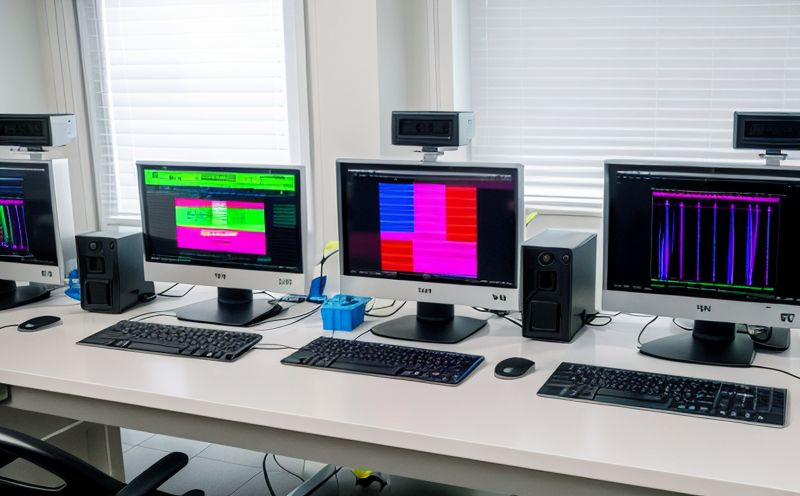ASTM E1052 Antiviral Efficacy Testing of Microbicides
The ASTM E1052 standard is a critical tool in ensuring the efficacy and safety of microbicidal products, particularly those designed to prevent sexually transmitted infections (STIs) and reduce the risk of HIV transmission. This test method evaluates the antiviral activity of microbicides against specific viral strains, providing manufacturers with data essential for product development and regulatory compliance.
The ASTM E1052 protocol is designed to standardize testing procedures across different laboratories, ensuring consistency and reliability in results. The test involves exposing a sample of the microbicidal agent to a defined concentration of HIV or other relevant viruses under controlled conditions. After incubation, the samples are analyzed for viral viability using techniques such as PCR (Polymerase Chain Reaction) or plaque assay.
The primary objective of ASTM E1052 is to determine the minimum inhibitory concentration (MIC), which represents the lowest concentration at which the microbicidal agent exhibits antiviral activity. This MIC value is crucial for understanding the active ingredient's effectiveness and formulating products with optimal potency.
Manufacturers rely on this standard test method to ensure their products meet stringent regulatory requirements set by bodies like the FDA (Food and Drug Administration) and EMA (European Medicines Agency). Compliance with ASTM E1052 also enhances brand reputation, as it demonstrates a commitment to producing high-quality, safe, and effective microbicidal products.
By adhering to this standard, companies can streamline their product development process, reduce the time-to-market for new formulations, and minimize costly rejections during clinical trials. The standardized nature of ASTM E1052 also facilitates collaboration among researchers, enabling them to share consistent data that supports advancements in microbicide technology.
The test method is particularly important given the evolving landscape of STIs and HIV, where there remains a critical need for innovative solutions. ASTM E1052 helps bridge the gap between laboratory research and real-world applications, ensuring that products are not only effective but also safe for use in diverse environments.
Moreover, this standard plays a vital role in fostering public health initiatives aimed at reducing the spread of STIs and HIV. By supporting the development of reliable microbicidal agents, ASTM E1052 contributes to global efforts to improve sexual health and well-being.
Why It Matters
The importance of ASTM E1052 cannot be overstated in the context of public health and medical research. The standard ensures that microbicidal agents are rigorously tested for their ability to inhibit viral replication, thereby reducing the risk of STI transmission.
By adhering to this standard, manufacturers can demonstrate the efficacy of their products, which is essential for regulatory approval and market entry. This not only protects consumers but also encourages innovation in product development. The standardized testing process reduces variability between different laboratories, leading to more reliable and consistent results.
The availability of accurate data from ASTM E1052 tests allows researchers and clinicians to make informed decisions about the use of microbicidal agents. This information is vital for guiding public health policies and interventions aimed at preventing the spread of STIs and HIV.
Furthermore, compliance with this standard enhances the reputation of companies involved in the development and production of microbicidal products. It demonstrates a commitment to quality, safety, and effectiveness, which are crucial factors influencing consumer trust and market positioning.
Quality and Reliability Assurance
The ASTM E1052 standard is designed to ensure that the testing process for antiviral efficacy of microbicides is both accurate and reproducible. This is achieved through a series of stringent procedures that include:
- Standardization of viral strains used in testing.
- Controlled environmental conditions during incubation periods.
- Precise measurement of microbicidal agent concentrations.
- Consistent use of analytical methods for assessing viral viability.
The standardization of these factors ensures that the results obtained from ASTM E1052 tests are reliable and can be used to make informed decisions about product development and regulatory submissions. This reliability is particularly important in the context of public health, where accurate data can have significant implications for patient care.
Quality assurance measures implemented during the testing process include regular calibration of equipment, validation of analytical methods, and adherence to strict laboratory protocols. These measures help to minimize errors and ensure that the results are as precise as possible. The use of international standards like ASTM E1052 also enhances the credibility of the test results in both national and international markets.
The reproducibility of results is a key aspect of quality assurance in ASTM E1052 testing. By ensuring that tests conducted by different laboratories yield similar outcomes, this standard promotes trust among stakeholders and facilitates collaboration between researchers and clinicians.
Competitive Advantage and Market Impact
The implementation of ASTM E1052 standards provides a competitive edge for companies in the microbicidal market. By demonstrating compliance with these standards, manufacturers can differentiate their products from competitors based on scientific rigor and reliability.
Compliance with ASTM E1052 ensures that products meet stringent regulatory requirements set by health authorities worldwide. This not only facilitates easier market entry but also enhances brand reputation, leading to increased consumer trust and loyalty. A positive reputation in the industry can translate into higher sales volumes and market share.
The standardization of testing methods under ASTM E1052 ensures that all products undergo consistent evaluation, providing a level playing field for competition. This consistency allows companies to focus on innovation rather than compliance, ultimately leading to the development of more effective microbicidal agents.
Moreover, adherence to this standard can help companies navigate regulatory challenges more efficiently. By ensuring that their products meet international standards, manufacturers can avoid delays in obtaining necessary approvals and certifications. This streamlined process can significantly impact the overall timeline for product launches, giving companies a strategic advantage in the market.
The availability of reliable data from ASTM E1052 tests also supports research and development efforts aimed at improving microbicidal products. By providing accurate information about the efficacy and safety profiles of different formulations, this standard facilitates ongoing innovation and refinement of existing technologies.





